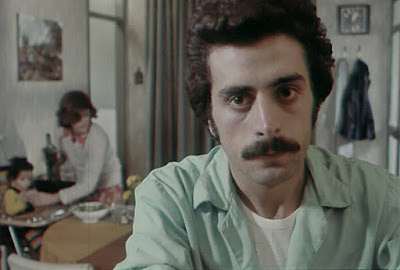 |
| Kuosh Afsharpanah and Shohre Aghdashloo in The Report |
The Report [original title: Gozaresh]
Abbas Kiarostami • Iran 1977 • 1h49m • Persian with English subtitles • Cast: Shohreh Aghdashloo, Kurosh Afsharpanah, Mehdi Montazar, Mostafa Tari, Hashem Arkan.
Arguably Kiarostami's least-known great film, part of the difficultly in accessing this compelling marriage drama lies in the fact that it was screened in Iran during the last months of the Pahlavi reign, when the country was gripped by strikes, demonstrations and acts of revolutionary violence – hardly the time for cinema, even if the film did relatively well. Shortly afterwards, when the revolution succeeded, the film – like so many other Iranian films showing nudity, sex or even unveiled women – was banned. The original elements of the film believed to be destroyed during the revolution and the copies in circulation have an unexpected cut in the middle of a scene of intimacy between the two leading characters, suggesting that it has been cut out after the revolution.
According to Iranian film critic Nima Hassani-Nasab, the film was totally conscious of the chaos which lay ahead: "The characters of the film are torn between a desire to revolt on one hand and cowardice and social inaction on the other. This conflict plunges them into dissatisfaction and fills them with hatred for both themselves and the repetitious cycle of life they live."










